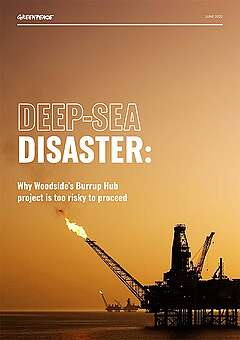
A spill or accident at Woodside’s Burrup Hub gas project could release toxic gas and condensate of a similar consistency to crude oil into World Heritage listed marine parks, with dangerous pollution reaching West Australian coastal communities and as far as Indonesia
Woodside Energy’s Burrup Hub is the largest fossil fuel project currently proposed in Australia, involving the extraction of six untapped gas fields and the drilling of 84 wells off the Western Australian coast. The Burrup Hub project includes two major gas projects – Scarborough and Browse – and the transport of this gas onshore via undersea trunklines ranging between 430km (Scarborough) and 900km (Browse) in length.
Using Woodside’s own documents provided to state and federal regulators, Greenpeace has mapped Woodside’s Burrup Hub offshore infrastructure and its spill and accident scenarios using Geographic Information Software (GIS) data. This mapping shows that Woodside’s proposed infrastructure runs directly through or adjacent to habitats critical to threatened and migratory species as well as coral reef ecosystems. It also shows, for the first time, the full geographic extent of a worst-case gas spill or other accident on protected marine ecosystems as well as the coastlines of Western Australia, East Timor and Indonesia. This is just one of the reasons that Greenpeace is calling on Woodside to walk away from its toxic gas project.

